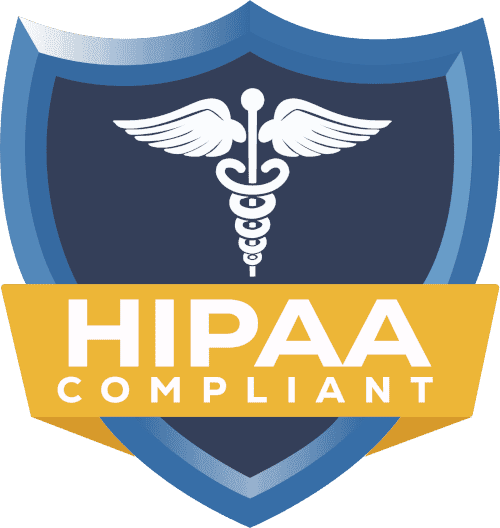How to Get Credentialed with Insurance Companies: A Simple Guide for Healthcare Providers

Getting properly credentialed with insurance companies might not be the reason you went into healthcare, but it’s certainly one of the most important administrative processes you’ll navigate in your career. For many providers, especially physician assistants, understanding this process might make or break the difference between a thriving practice and constant financial struggle.
What Is Provider Insurance Credentialing?
Well, it’s basically the thorough verification process that any and every health care provider has to be subjected to before an insurance company allows them as a service provider in their network. Believe it or not, they check out your education, your licensure and experience; and your professional background just to make absolutely sure these fit their standards with regards to patient care.
It is just the way an insurance organization puts it: “We find it absolutely necessary to confirm all your qualifications before we can begin paying you for services.” Fair enough, right?
For physician assistants and another provider, this verification process includes:
- Verifying your education and training
- Ensuring state license and certifications
- Validating work history (without unexplained gaps)
- Validating malpractice coverage
- Validation of clinical competencies
- Check your references and any history of discipline
Understanding Credentialing in Healthcare
Healthcare’s credentialing is not limited to the panels of insurance. It’s a fundamental process that ensures quality care throughout the healthcare system. It serves several purposes, such as:
- Protecting patients, ensuring provider qualifications are confirmed
- Reducing liability for the organization
- Regulatory compliance
- Establishing eligibility for reimbursement
- Quality assurance from healthcare services
While it may seem like just paperwork, credentialing actually forms the foundation of trust in our healthcare system.
The Various Types of Credentialing You Should Know
Health care providers may typically go through several kinds of credentialing during their career, such as insurance credentialing, hospital privileging, and CAQH credentialing.
Insurance Credentialing
The process by which one gets consent to participate and join the network of a particular insurance company as a provider.
Hospital Privileging
The process by which one gets to practice at and be authorized by a particular hospital or healthcare facility.
CAQH Credentialing
Centralized repository credential information using the Council for Affordable Quality Healthcare’s ProView system.
Medicare/Medicaid Enrollment
Specific process required by government insurance programs, which often have additional requirements.
State Medicaid Enrollment
Often separate from federal Medicare enrollment, with state-specific requirements.
Delegated Credentialing
A bigger organization (such as a system of hospitals) usually performs credentialing verification in the name of the payers.
For physician assistants specifically, understanding these distinctions helps you navigate which credentialing processes you need to prioritize based on your practice setting.
The Role of Physician Assistant Professional Liability Insurance
Professional liability coverage must be underwritten before entering the credentialing process. Not merely claim protection, Physician assistant liability insurance is mandated by nearly every carrier for credentialing.
Most health insurance networks require minimum coverage levels, (usually $1 million per occurrence and $3 million aggregate). Your policy info will be cross-checked during credentialing, and the coverage should be uninterrupted during your time as a credentialed provider.
Employment may provide some coverage, but this would need to be obtained for credentialing applications. Having your liability insurance documentation ready will streamline your applications significantly.
A Guide for Physician Assistant Health Insurance Networks
Are you ready to continue with the credentialing process? Let’s find out which insurance companies we should get credentialed with, in your geographic area and with your patient demographic.
Ask yourself:
- What are the most common insurance plans for your area of services?
- Which plans give the best reimbursement rates for your specialty?
- Which plans do the referring providers in your network accept?
Generally, most practices start with the biggest insurers in their region, along with Medicare and Medicaid, if appropriate, to give the most extensive patient access.
How to Get a Provider Insured – Step by Step
1. Gather Your Documentation
The groundwork for a successful credentialing process starts with organizing all necessary paperwork:
- State license and DEA registration
- National Provider Identifier (NPI)
- Educational diplomas and certificates
- Board certifications
- CV with detailed work history
- Professional references
- Liability insurance certificate
- Hospital privileges documentation (if applicable)
- Information on the collaborating or supervisory physician
- Government issued identification
- Immunization records Organize all the documents in digital in a separate file
folder system to avoid time lapses during multiple applications.
2. Fill Out Your CAQH Profile
The CAQH ProView profile is the general credentialing application most Payers require in order to be fully credentialed.
To optimize the process:
- Complete your profile accurately
- Upload all supporting documentation
- Re-attest to your information quarterly
- Authorize access for each Payer specifically
- Update your profile immediately upon any change in information.
A complete and current CAQH profile can substantially cut credentialing timelines with many Payers.
3. Research Payer Requirements
Every insurance company has different requirements and processes which is why doing research before applying is important to know:
- If the panel is open to your specialty
- Any specific requirements for physician assistants
- Documentation beyond the standard CAQH profile
- Typical processing timelines
- Recredentialing frequencies.
Contact the provider relations department directly to confirm current requirements and panel status before investing time in applications.
4. Submit Applications Strategically
When submitting applications you should:
- Apply to three to five insurance companies at a time
- Put major players in your area at the forefront
- Submit applications for Medicare/Medicaid early
- Double-check all information for accuracy
- Keep copies of all applications you submit
- Submission dates and contact information recorded
5. Consistent Follow-Up
Where many credentialing efforts succeed or fail:
- Two weeks after submission, contact every payer.
- Frequency of follow-up intervals established
- Each communication should be documented with a name and date
- Be responsive to requests for additional information quickly
- Politely persistent but not confrontational
6. Contracting and Enrollment
Once your credentials are verified:
- Review of terms in the contract:
- Negotiate where possible
- Get a healthcare attorney to review the contract
- Finish the enrollment process
- Check the effective dates before billing
7. Implement a Recredentialing System
Credentialing isn’t a one-time thing:
- Make a calendar regarding recredentialing deadlines
- Schedule them 4-6 months before they expire
- Keep current documentation
- Keep track of all renewal dates for licenses and certifications.
When to Consider Insurance Credentialing Services
Many providers, particularly busy physician assistants, find value in professional insurance credentialing services. These specialized services manage the entire process from application to approval, saving providers significant time and administrative burden.
Consider credentialing services when:
- When you start a new practice.
- When you’re joining several insurance panels at once
- When your administrative staff doesn’t have credentialing expertise
- If you’ve been struggling with credentialing
- When you want to spend more time treating patients rather than filling out paperwork
Quality credentialing services typically offer:
- Full application preparation and submission
- CAQH profile management
- Follow up with the insurance companies
- Contract review assistance
- Tracking their credentialing status
- Recredentialing management
Although these services are costly, many providers find the investment to be worthwhile because of the potential revenue that can be generated from faster enrollment and time saved.
Common Challenges and Solutions
Even when planning meticulously, you might hit a roadblock:
Challenge: Timelines are Lengthy
Solution: Begin the process at least 3-6 months before planning to see patients with that insurance.
Challenge: Missing Documentation
Solution: Create a full checklist and review all applications before submitting any of them.
Challenge: Specific Requirements for PAs
Solution: Research each health plan’s particular policies for physician assistants before applying to any of them.
Challenge: Tracking Multiple Applications
Use spreadsheets or software to keep track of the application statuses.
Challenge: Communication Barriers
Solution: Build relationships with provider representatives where possible, and document all contact information.
Conclusion
While the provider insurance credentialing process remains complex, approaching it systematically improves both success rates and timelines. For physician assistants specifically, understanding the requirements related to your profession, maintaining appropriate liability coverage, and organizing your documentation thoroughly are key steps toward successful credentialing.
Whether you self-manage the process or use professional services, investment in proper credentialing pays off by increased access to patients, better rates of reimbursement, and practice stability.
Remember that credentialing is not a one-time thing; it keeps going on as a part of managing your practice. You will go through the process with success if you implement the strategies from this guide and focus on giving your patients the best care.



















